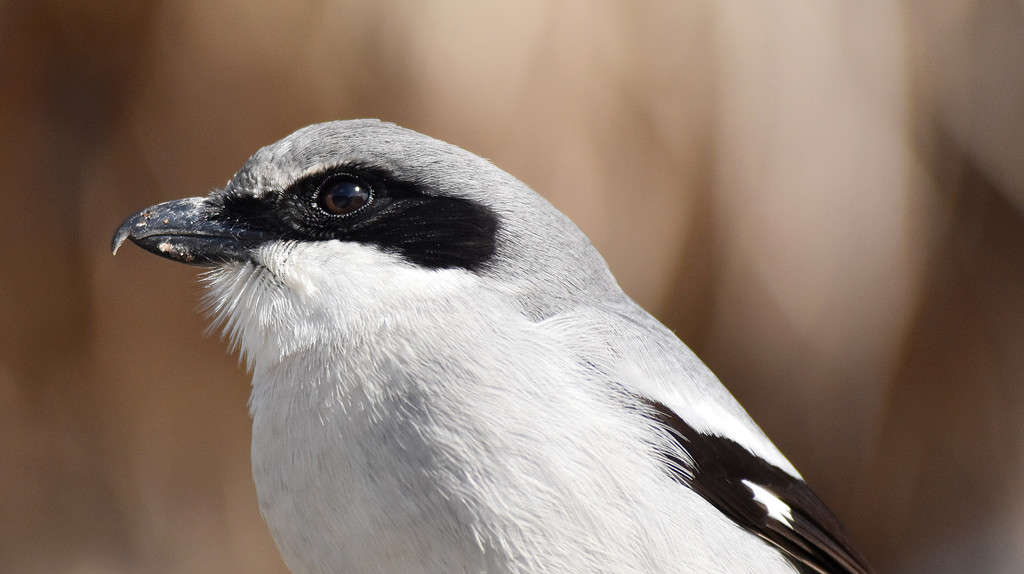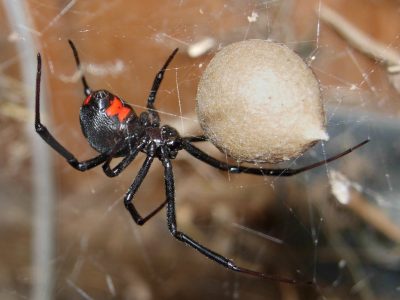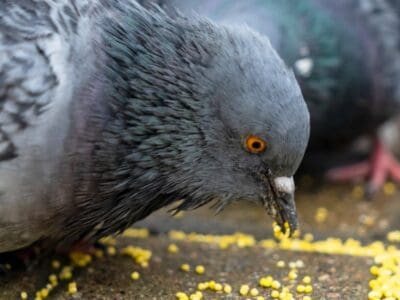Loggerhead Shrike
Lanius ludovicianus
Its nickname is the butcherbird!
Advertisement
Loggerhead Shrike Scientific Classification
- Kingdom
- Animalia
- Phylum
- Chordata
- Class
- Aves
- Order
- Passeriformes
- Family
- Laniidae
- Genus
- Lanius
- Scientific Name
- Lanius ludovicianus
Read our Complete Guide to Classification of Animals.
Loggerhead Shrike Conservation Status
Loggerhead Shrike Facts
- Fun Fact
- Its nickname is the butcherbird!
- Estimated Population Size
- 7 million
- Most Distinctive Feature
- Black mask
- Other Name(s)
- Butcherbird
- Wingspan
- 11 to 12.6 inches
View all of the Loggerhead Shrike images!
“Its nickname is the butcherbird!”
The loggerhead shrike is a small passerine bird. It is the only species of shrike that is native only to North America. While other species can be found here, they are also native to other regions of the world, making this bird unique. Its nickname comes from its unique way of capturing and eating its food. Since they are small birds who catch larger animals, they impale their prey on thorns to effectively hunt them.
Loggerhead Shrike Amazing Facts
- It is the only species of shrike endemic to North America.
- It impales its prey using thrones or barbed wire.
- There are seven subspecies of loggerhead shrike.
Where to Find Loggerhead Shrikes
Loggerhead shrikes are endemic to North America. This means that they don’t exist anywhere else in the world except for these few countries. They have a large year-round presence in the continental United States.
No matter the time of year, you can expect to be able to see them anywhere in the United States except the northernmost states. In these regions, as well as in Canada, this bird is common during their breeding seasons. At other times of the year, they can be seen migrating far south into Mexico.
In past decades, loggerhead shrikes were widely distributed across North America. However, as their population has declined, sightings have become less frequent.
These birds have specific needs for their habitats. First, they favor open environments. This includes areas like grasslands and pastures. They also require elevated areas for perching and nesting. In nature, this includes red cedar and hawthorn trees as their thorns protect these birds from predators.
Nests
When it comes time to build their nest for the breeding season, both males and females will work together to pick the right nesting location. The mating pair can be precise when picking the right area to nest, sometimes inspecting several different locations before deciding on one.
Loggerhead shrikes prefer to nest in areas with thorny vegetation, such as in certain trees. This is because these thorns help protect them as well as their offspring until it comes time to leave the nest.
Not only is choosing the nest location a cooperative effort, but gathering the materials to build the nest is, too. Both males and females will spend time flitting around the nearby areas to gather the preferred materials to build a safe and effective nest for their offspring. The exterior of the nest is built with strong, protective materials that add structure. This includes roots and barks. The inside, however, is lined with softer materials for insulation. This includes grass, fur, and feathers.
The female will work alone to build the nest, however. It can take her several days to do so, with the nest not being complete for around 6 to 11 days. Because these are small birds, they do not require much room in their nests. A typical loggerhead shrike nest is around 6 inches in diameter and around 3 inches deep.
Scientific Name
The scientific name for the loggerhead shrike is Lanius ludovicianus. The species name is derived from the Late Latin word “ludovic”, which translates to mean Louis’. Its genus name translates to mean “butcher”. In all, the scientific name ends up translating to mean “Louis’ butcher”. Its common name, loggerhead, is in reference to the shrike’s larger head in contrast to its small body.
The loggerhead shrike is in the class of Aves. It is in the family of Laniidae, which makes up all 34 species of true shrike. There are seven recognized subspecies of loggerhead shrike:
- L. l. excubitorides
- L. l. migrans
- L. l. ludovicianus
- L. l. anthonyi
- L. l. mearnsi
- L. l. grinnelli
- L. l. mexicanus.
Size, Appearance, & Behavior

About the size of a robin, loggerhead shrikes aren’t particularly large birds.
©holdows/Shutterstock.com
The loggerhead shrike is an average size bird, around the size of a robin. Adults can grow to be anywhere from 7.9 to 9.1 inches long, and they can weigh as much as 1.2 to 1.8 ounces. They sport an average size wingspan for birds of their size. From wingtip to wingtip, an adult loggerhead’s wingspan can measure between 11 and 12.6 inches long.
Loggerhead shrikes have an easily identifiable appearance. One of their most distinguishing factors is their large head, which contrasts with their smaller, slender body. Their bodies are gray with a white chest, and they sport a notable black mask. The tips of their wings are also black, with white markings.
It’s not uncommon to see a loggerhead shrike perched low looking for prey. Loggerhead shrikes will also hover, especially when they are hunting prey. Once the loggerhead shrike has caught its prey, it often lacks the ability to effectively kill it. This is because, on top of often choosing prey that is much larger than themselves, loggerhead shrikes have small beaks and talons. As a result, one of their most well-known behaviors is using tools to hunt their prey. After capturing an animal in its beak or talon, the loggerhead shrike will use a thorn, barbed wire, or similar object to impale their prey.
Migration Pattern and Timing
Loggerhead shrikes are not highly migratory birds. They have a large and widely distributed year-round population in the United States and western Mexico. However, there are some areas of migration. In these instances, the loggerhead shrike will fly into the northern extent of its range during the breeding season and settle into southeastern Mexico for the winter months.
Diet
The loggerhead shrike is a carnivorous bird. While they are not considered to be solely insectivores, a large portion of their diet is made up of insects. This is especially true during the warmer breeding months, when insects are more widely available to hunt. They are also known to eat reptiles, mammals, and other birds.
Impalement isn’t always used solely to ensure a successful hunt, however. Sometimes, even after a loggerhead shrike has successfully captured an animal to eat, it will use a thorn or barbed wire. This helps anchor the prey down so that the shrike is able to easily tear off pieces to eat. They will also leave their food where it has been impaled and return to it later. Male shrikes may accumulate several different animals in this way, which can help them attract mates.
What Do Loggerhead Shrikes Eat?
Loggerhead shrikes are known to catch a wide variety of prey, many of which are often greater than they are in size. They are able to accomplish this through their use of thorns and barbed wires. Some of the most common animals found in the regular diet of an adult loggerhead shrike include:
- Grasshoppers
- Beetles
- Lizards
- Snakes
- Frogs
- Turtles
- Sparrows
- Goldfinches
- Ground squirrels
- Voles
- Mice
- Rats
- Shrews.
Although they are not scavengers, they do not always hunt for live prey. Occasionally, they have been known to scavenge the wilderness and roadsides for roadkill or carcasses left behind by larger predators. This is not a common practice, however, and carrion makes up only a small portion of the adult loggerhead shrike’s diet.
Predators and Threats
One of the largest threats to loggerhead shrikes is chemicals. Loggerhead shrikes eat a variety of animals commonly considered to be pests, from insects to mice. These animals often ingest harmful chemicals used for pest control. These chemicals then pass to the bird, which can die if too many chemicals are ingested.
However, loggerhead shrikes are also threatened by several general manmade threats. This includes vehicle collisions and deforestation. There are also natural threats. This mainly includes predators that eat loggerhead shrikes.
What Eats Loggerhead Shrikes?
Although loggerhead shrikes are skilled hunters for them to be passerine and not birds of prey, they are not apex predators. In fact, from their eggs to adults, there are many predators that will loggerhead shrikes when given the chance. This includes
Loggerhead Shrike Reproduction, Babies, and Lifespan
The loggerhead shrike is monogamous. However, after one clutch hatches, the male may attempt to seek out a new mate. The female, however, will typically only lay one clutch per breeding season.
There are many different ways that males find mates. One of the most notable methods is through boasting a large food supply. They may also perform other courtship rituals, however, such as singing. Loggerhead shrikes are particularly known for their amazing displays in the air, where the male will fly around erratically in a sort of dance in order to impress nearby females who may be watching. After finding a mate, the male and female will decide upon a nest site and begin the construction of the nest. Both the male loggerhead shrike and the female will work together to collect the needed materials for both the structure and lining of the nest. Only the female, however, will work to put the nest together.
A single clutch can include anywhere from 5 to 6 small, gray eggs. The females will incubate these eggs for 15 to 17 days. After the eggs hatch, the young offspring will need to spend more time in the nest in order to fully develop. This is because the nestlings are born without any feathers and with their eyes closed. It takes between 16 and 20 days for the nestlings to mature enough to leave the nest.
Despite being a smaller species of bird, the loggerhead shrike actually has a relatively long lifespan. The oldest loggerhead shrike on record was caught and released in California in 2010. This male was estimated to be almost 12 years old at the time, if not older.
Loggerhead Shrike Population
In recent decades, the loggerhead shrike population has faced a decline. Scientists have been unable to single out a source for this decline, although it is believed to be a result of the many threats against this species. The exact classification depends on the subspecies and location, however.
The eastern loggerhead shrike (L. l. migrans) is considered to be critically endangered in Canada. Here, there are less than 35 breeding pairs remaining. The San Clemente Island shrike (L. l. mearnsi) is also critically endangered. During this subspecies’ lowest point in the 1980s, there were less than a dozen individuals. On a national level, the San Clemente Island shrike is only listed as endangered in the United States. However, it is considered locally extinct in many of its previous habitats, including all of New England.
Overall, while the population of certain subspecies may be declining at an expedited rate, the overall population of the loggerhead shrike is listed only as a near-threatened species. On a global level, there are an estimated 7 million adults.
View all 98 animals that start with LLoggerhead Shrike FAQs (Frequently Asked Questions)
Do loggerhead shrikes migrate?
Small populations of loggerhead shrike migrate. However, they are mainly year-round in their habitat.
How many eggs do loggerhead shrikes lay?
Loggerhead shrikes lay around 5 to 6 eggs per clutch.
How fast do loggerhead shrikes fly?
Loggerhead shrikes are quick fliers with the ability to hover.
What is the loggerhead shrike's wingspan?
An adult loggerhead’s wingspan can measure between 11 and 12.6 inches long
When do loggerhead shrikes leave the nest?
Young loggerhead shrike leave the nest after 16 to 20 days.
Thank you for reading! Have some feedback for us? Contact the AZ Animals editorial team.
Sources
- 03/18/2023, Available here: https://academic.oup.com/auk/article-abstract/95/2/221/5208791


















